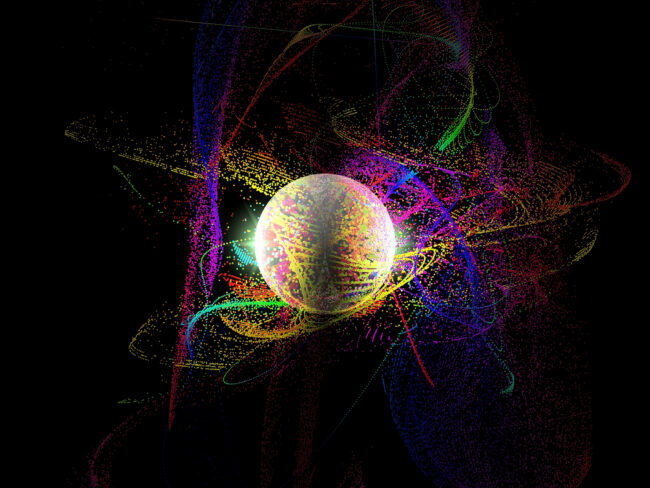A team of Chinese researchers have successfully teleported an object from the ground to a satellite orbiting 500 km above the Earth1. The object in question was a photon, a particle of light.
The term teleportation is defined by the instantaneous transfer of an object from one location to another. But this would involve the faster than light travel of a physical object, which as far as we know is forbidden by the laws of physics.
So what did the researchers manage to achieve?
In the quantum mechanical description of reality, elementary particles – such as photons – can be entirely described by their quantum state (the mathematical function describing an isolated quantum system – independent of measurement). Thus two particles in the same quantum state are indistinguishable. Therefore, teleportation of elementary particles is possible by transferring a quantum state from one particle to another.
Transferral of a quantum state is not easy. As a major obstacle is that no measurement can completely determine the quantum state, as the mere act of measurement affects the system. This is a result of the Heisenberg uncertainty principle. Simply put, one cannot measure the state of one particle and reconstruct the same state in another particle, thus creating an exact copy.
To get around this, scientists exploit a phenomenon called quantum entanglement. A single quantum state describes the particles that are entangled – which as a result means that these particles are not independent entities. A consequence is that any measurement done on one particle will immediately affect the other, something that Einstein famously referred to as “spooky action at a distance”.
In the teleportation experiment, scientists produce an entangled pair of photons, A and B, and send photon B out to the satellite. On the ground, entanglement between photon A and a third photon C occurs by performing a Bell-state measurement2; by performing this measurement, photon B has now assumed 1 of 4 possible Bell States. This state may either be the same state as the photon being teleported or one of the other 3 possible states, in which case a modification is performed on photon B to change its state to the state wishing to be teleported. Photon B has essentially become photon C, instantaneously. The key here is that there is no measurement of the transferred state of photon C. The information that is projected to the distant photon must remain unknown; otherwise, the experiment doesn’t work.
Quantum teleportation has been achieved before using entangled particles separated by distances up to 144 km3. In principle, it should work for arbitrary distances, but what sets this latest experiment apart is its scale. The potential for the photons to interact with other particles increases with the distance travelled: any interaction nullifies the experiment. Successful long-distance quantum entanglement brings the possibility of ultra-secure worldwide quantum communication. As well as being an impressive technological feat, this experiment is a remarkable demonstration of the bizarre consequences of quantum mechanics.
Edited by Aidan McFadden and Richard Murchie

